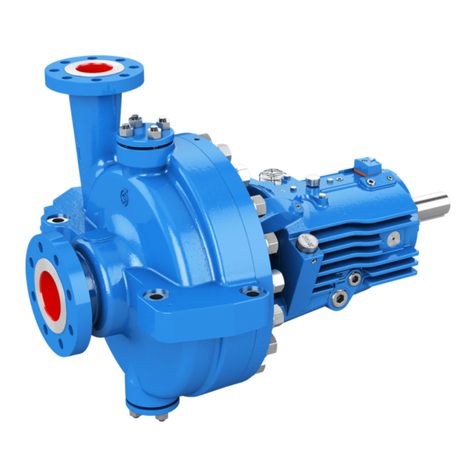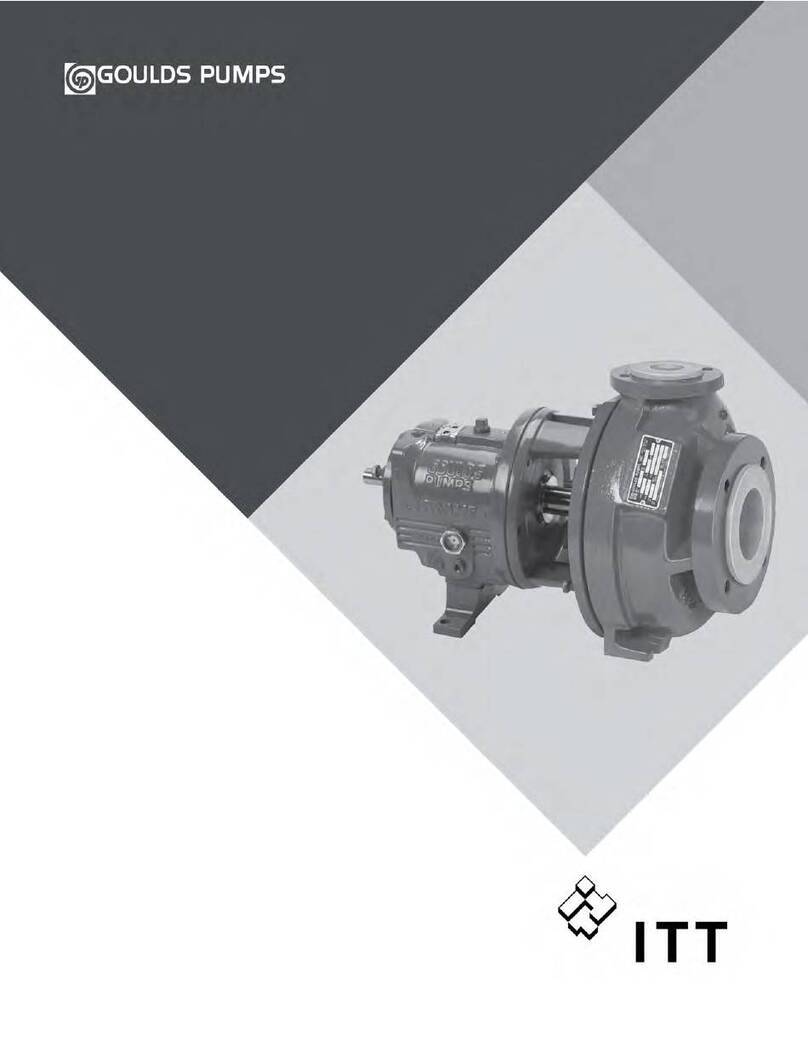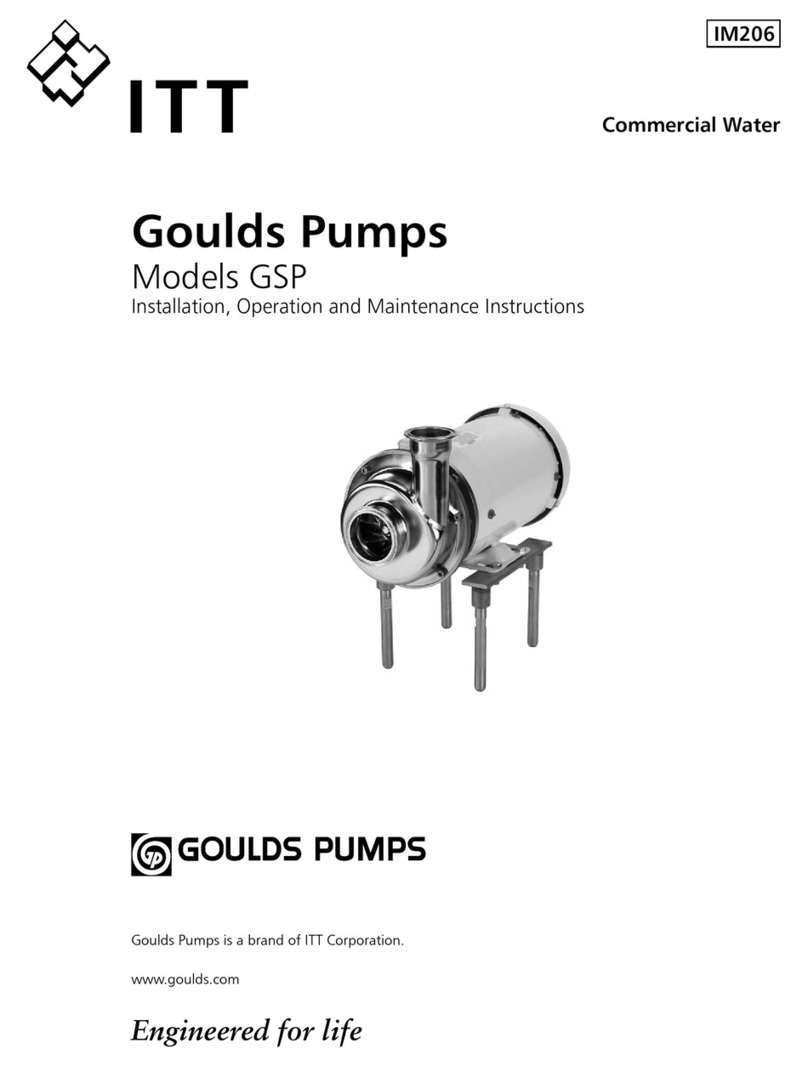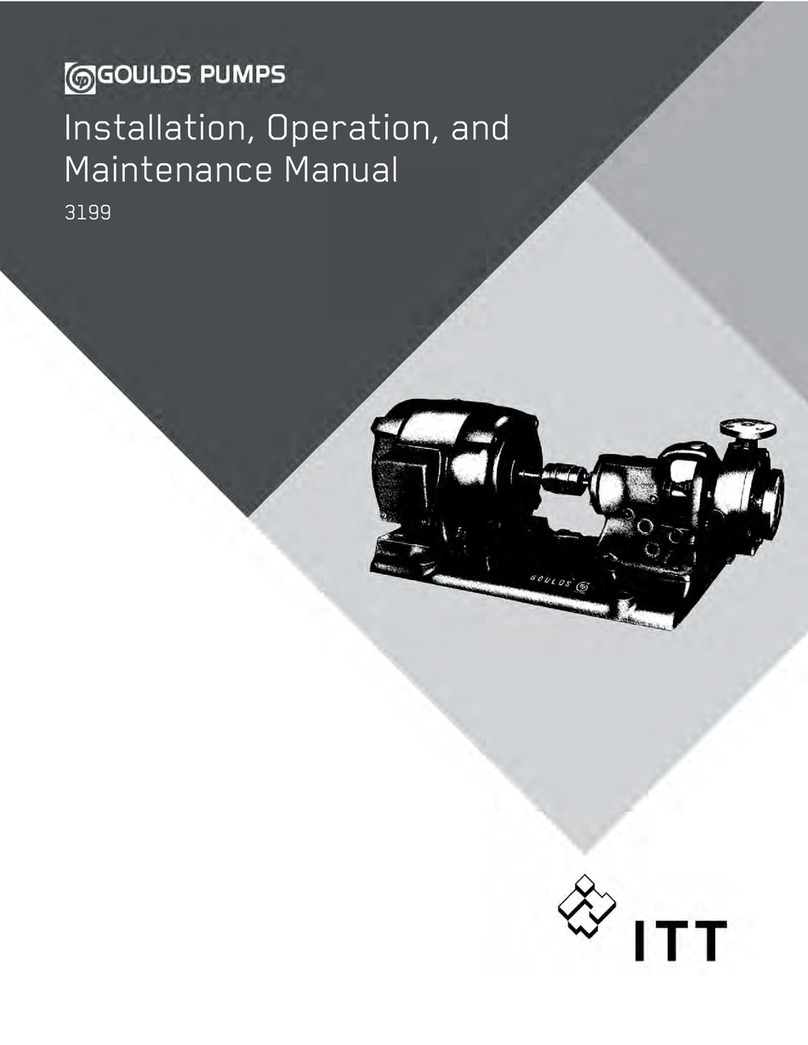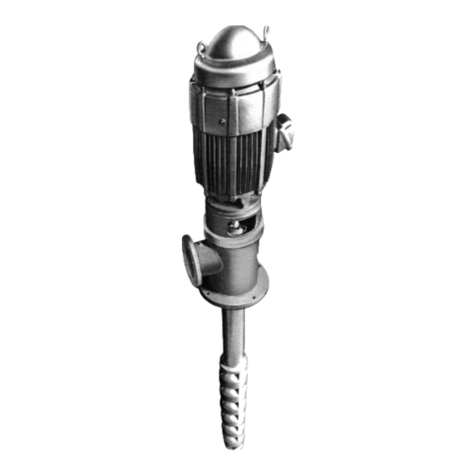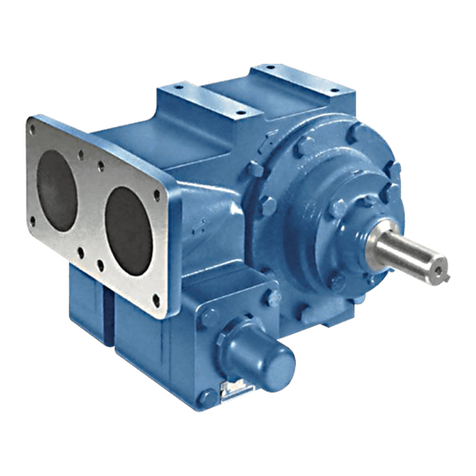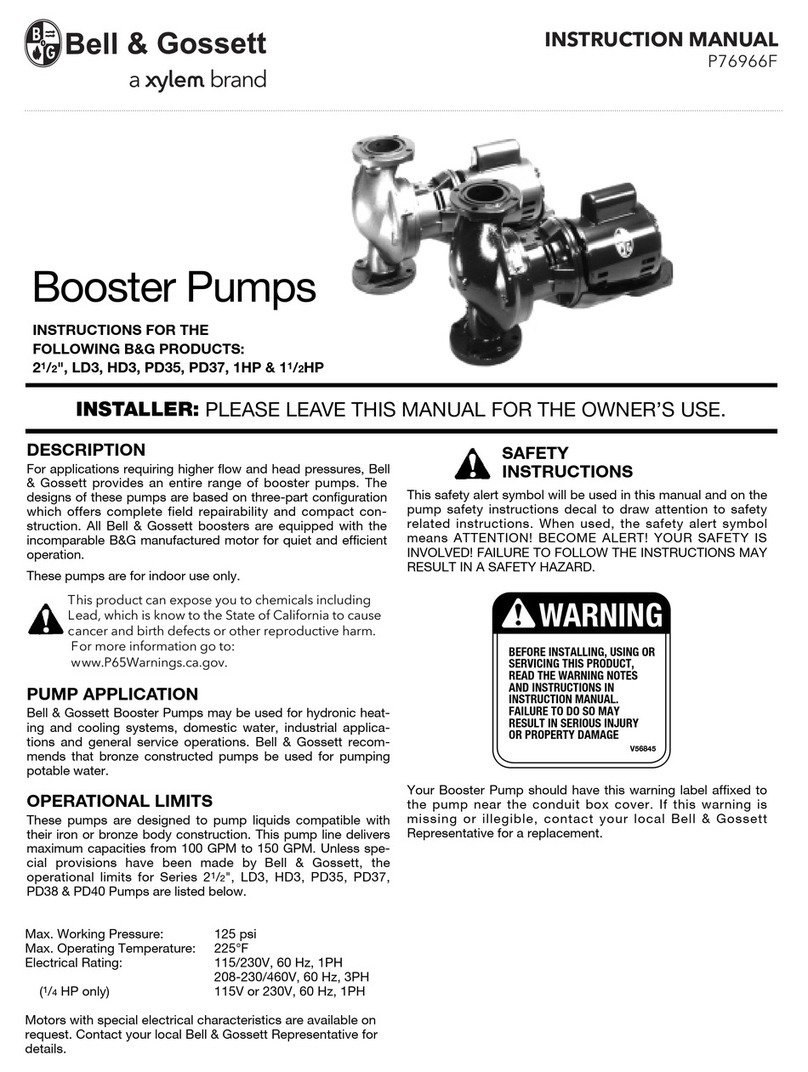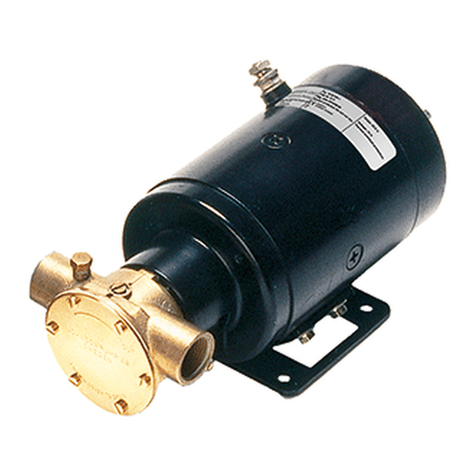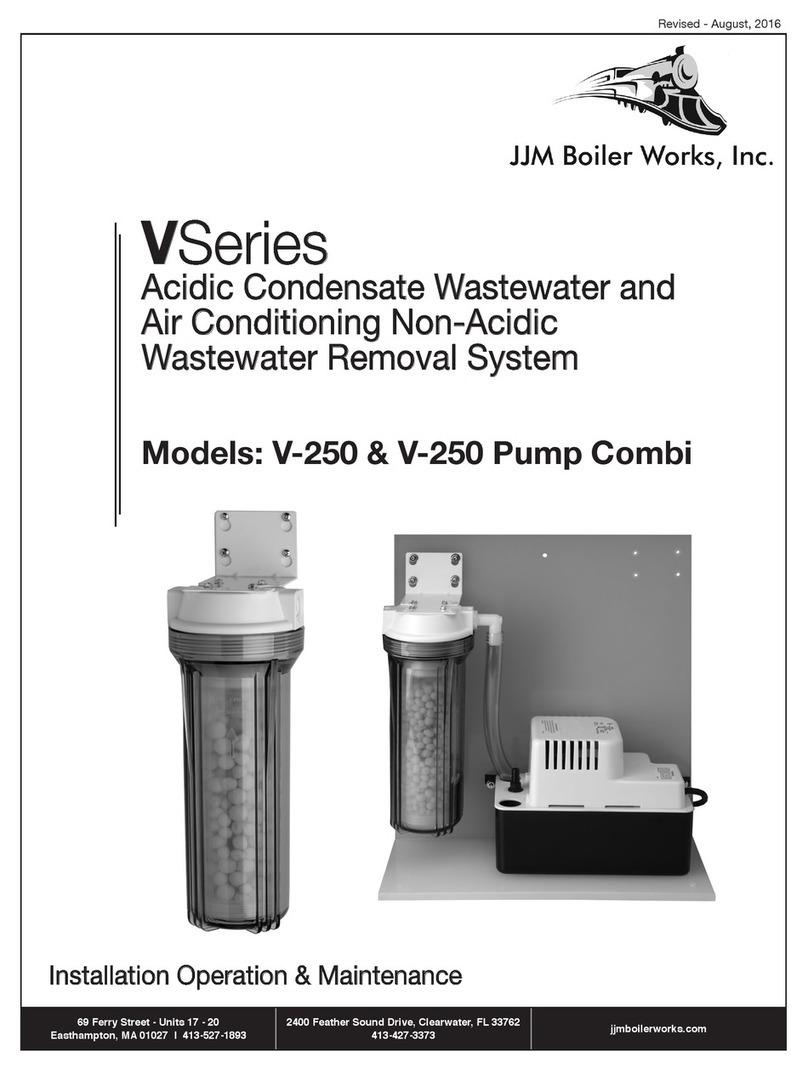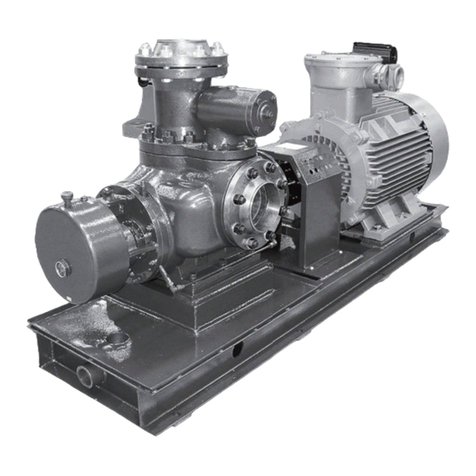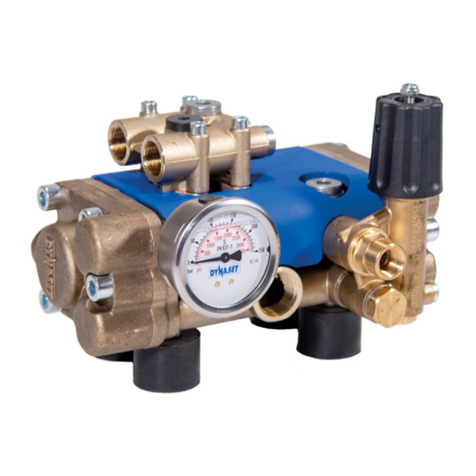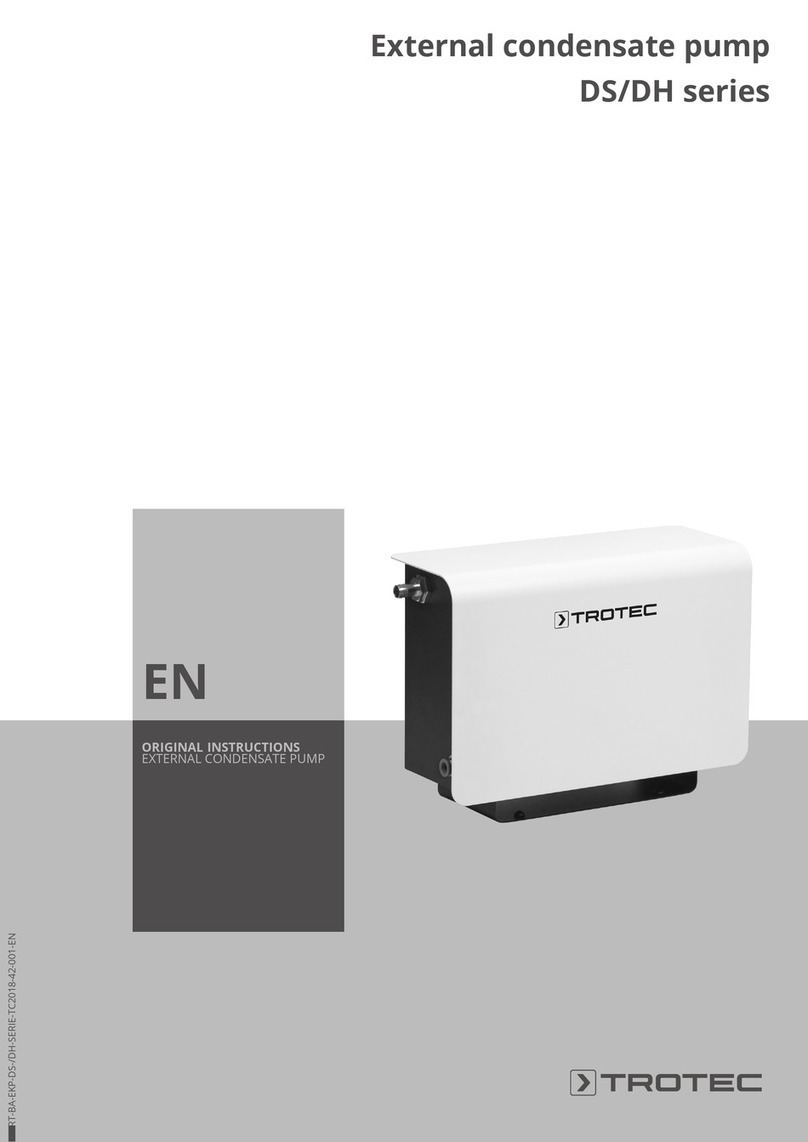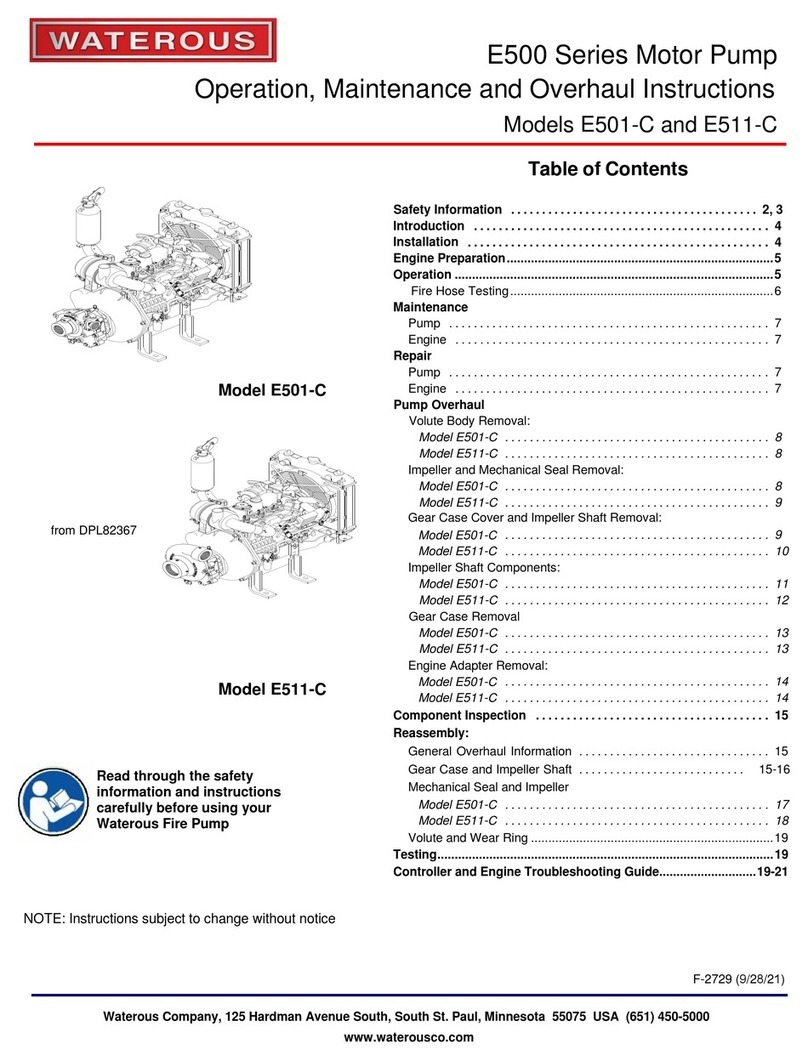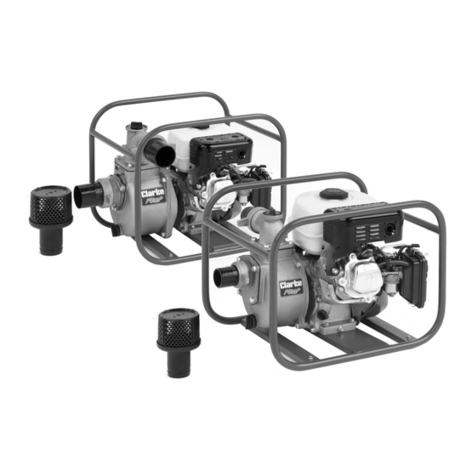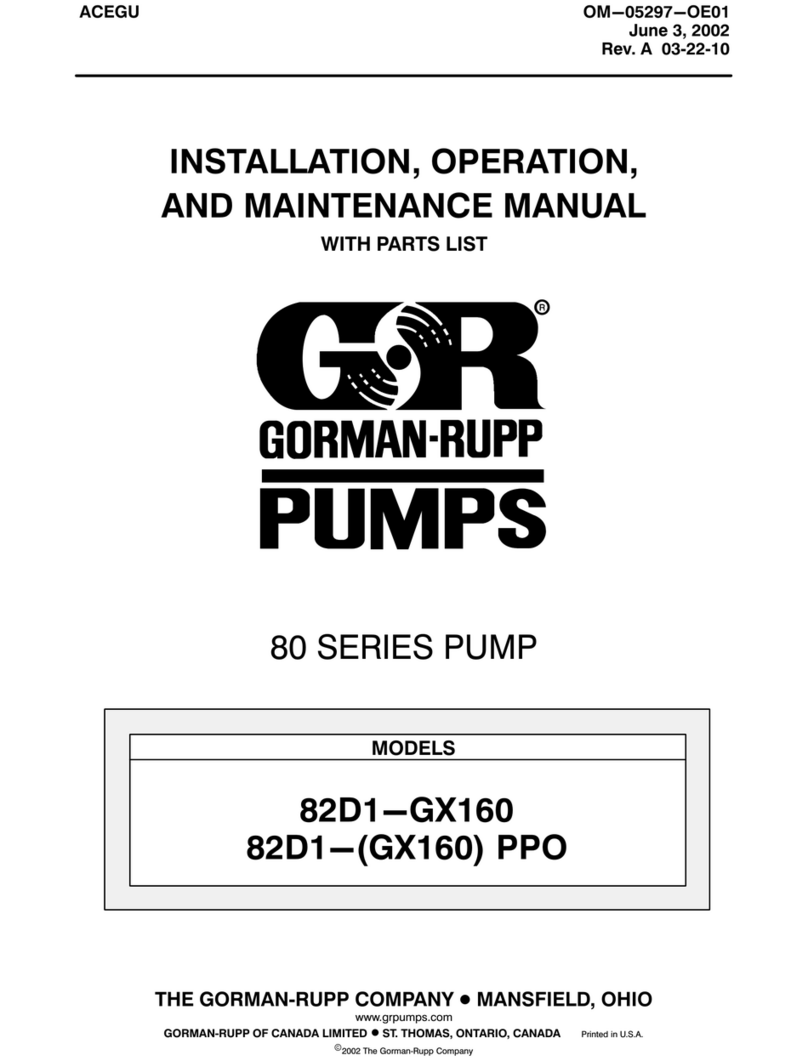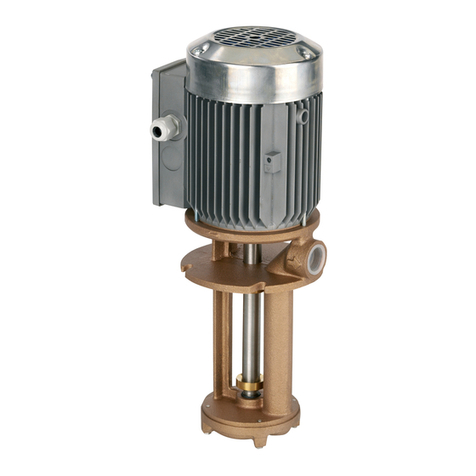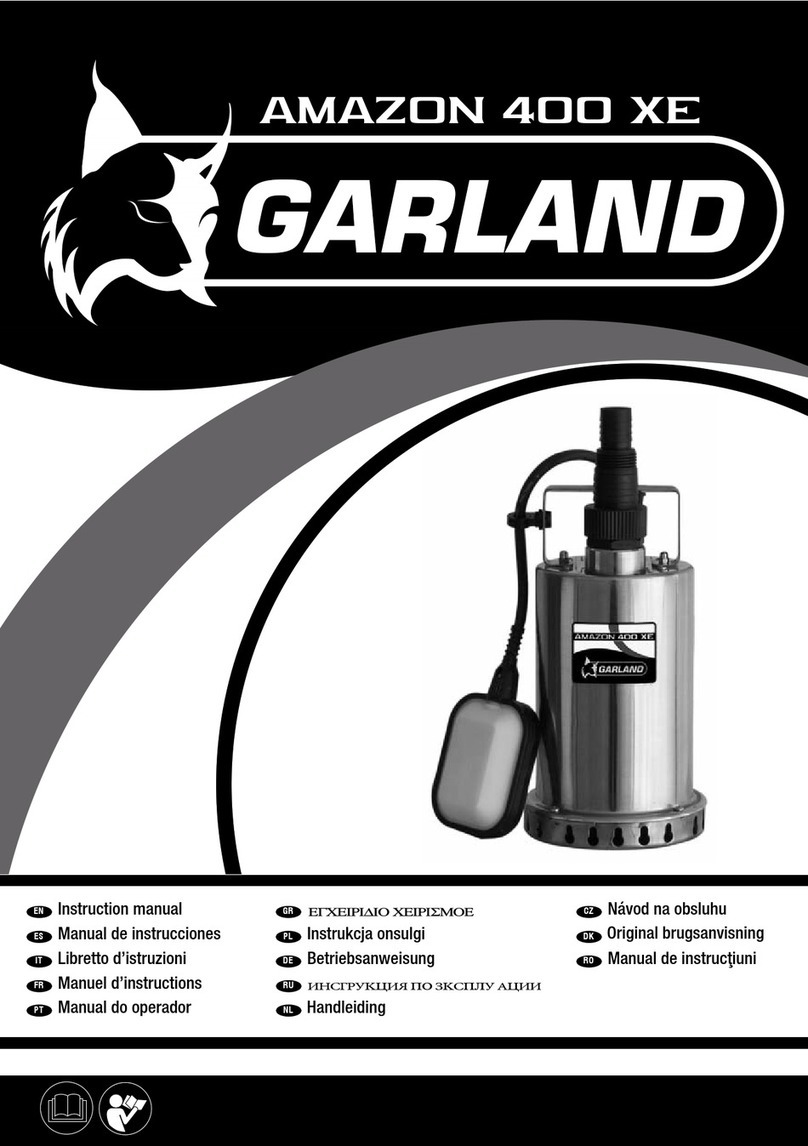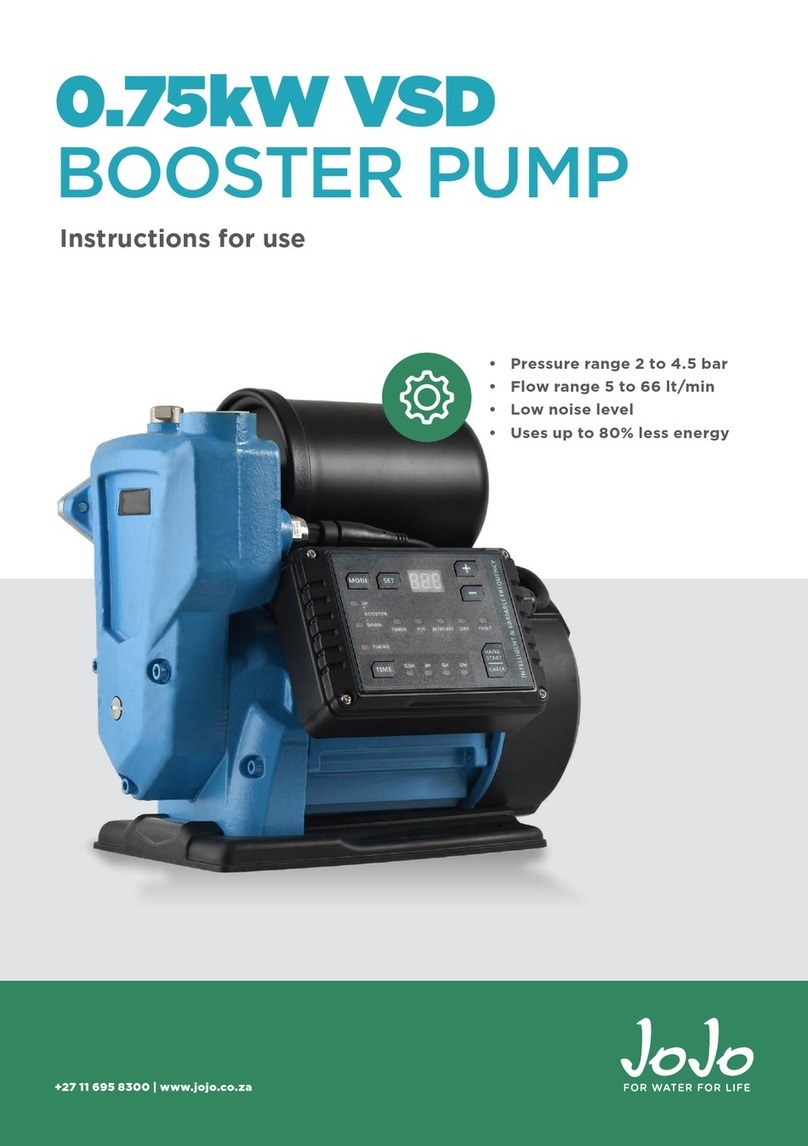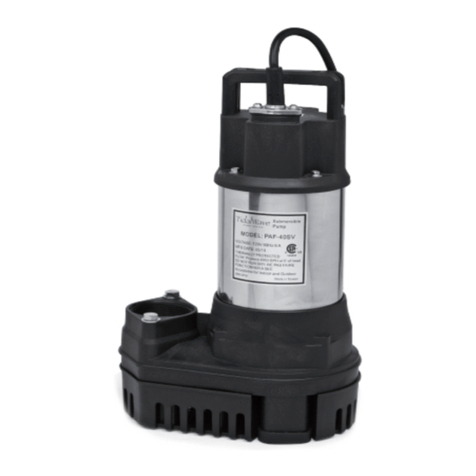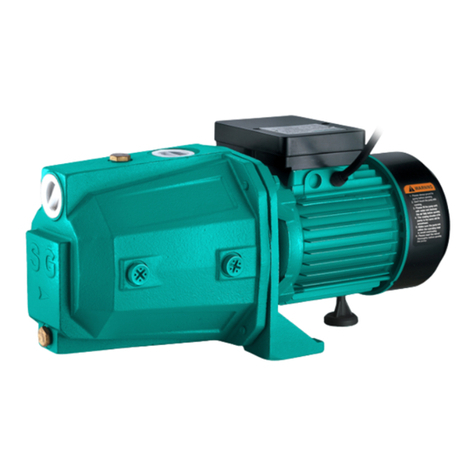
4
any reason you must have fittings or filters between the
pump and tank and they cause switch chatter you should
move the pressure switch to the tank cross tee. Go To
“Install Hydro-Pro Water Systems Tank" to Complete
Shallow Well Installation.
DEEP WELL TWIN PIPE – start here
Twin Pipe Suction Piping
A twin pipe jet assembly is used in wells 4” and larger.
Our 4” jet assemblies require a minimum 11⁄4” suction
and 1” drive water pipe; 5” jets require a minimum 11⁄2”
suction and 11⁄4” drive water pipe. Use of smaller piping
will reduce performance in gpm and pressure. Offsets
over 50’ require larger pipes to reduce friction loss and
to obtain published performance.
Install Twin Pipe Jet Assembly
Check to make sure the nozzle is installed in
the jet assembly. Install the venturi tube in line
with the nozzle. On 4” jets attach the 11⁄4”
suction and 1” pressure pipe to the jet assembly
female threads. On 5” jets the pipes should be
11⁄2” and 11⁄4”. Install a foot valve on the male
thread bottom port on the jet assembly or on the end of a
34’ tail pipe. The tail pipe prevents over pumping a low
yield well so the pump will not break suction. See Tail
Pipe in Technical Section.
Lower the jet assembly into the well. It should be set at
least 5’ below the static water level. Keep the jet a few
feet off the well bottom to lessen the possibility of
sucking debris into the jet. The connections at the well
head can be either a pitless adapter or a well seal.
Priming will be easier if you fill the pipes with water
before attaching the pump.
Connect the suction and pressure pipes to the threaded
connections on the face of the pump. This can be done
using unions and threaded pipe nipples, or barbed
connectors with poly pipe. Always double clamp barbed
connectors. Make sure that the piping slopes upward to
the pump and that no point is above the pump suction.
On long offsets it is easier to prime the system if you fill
the pipes with water before connecting the pipes to the
pump. Go to Deep Well Discharge Piping.
DEEP WELL PACKER SYSTEM – start here
Packer Suction Piping
Packers use the area between the well casing
and the suction pipe as the drive water
(pressure) pipe. The 2” or 3” well casing must
be smooth and clean to insure a good seal with
the packer leathers or the system will leak and
not hold prime. The 2” packer requires 11⁄4”
threaded suction pipe and the 3” requires 11⁄2”. On 2”
packers only: Use the Goulds Pumps turned couplings
part #64655 to connect the sections of 11⁄4” threaded
pipe. This special diameter turned coupling increases the
clearance between the 2” well I.D. and the O.D. of the
coupling to allow the drive (pressure) water to easily pass
the couplings. Failure to use them will have a negative
impact on pump performance, both pressure and gpm
will decrease. The pump may easily lose prime while
pumping due to the restriction!
Using smaller than recommended pipe may reduce gpm
output. The longer the pipe the worse the affect.
Install Packer Assembly
To ease installation soak the 2” or 3” packer assembly in
warm water to make the leathers soft and pliable. DO
NOT lubricate them with grease, oil, or petroleum jelly!
The leathers must absorb water to seal the packer
assembly against the well casing.
Check to make sure the nozzle is installed in the jet
assembly. Install the venturi tube in line with the nozzle.
Install a strainer (not supplied with packer assembly) on
the bottom port of the packer assembly or on the end of
a 34’ tail pipe. The tail pipe prevents over pumping a low
yield well so the pump will not break suction. Attach the
packer assembly to the suction pipes using the Goulds
Pumps’ turned couplings to connect the sections. Insert
the packer assembly into the well casing and push it
down. Attach the other pipe sections as you lower the jet
into the well. See Tail Pipe in Technical Section.
Attach Suction Pipe To Packer Adapter
Packer systems always require a Packer Adapter at the
well head. The adapter makes the transition from vertical
to horizontal for horizontal pumps, and it connects
vertical pump casings to the well casing and suction pipe.
See the list of Packer Adapters/Pump Models to see
which one your pump system requires. See Chart 1 for a
list of Packer Adapters/Pump Models.
After the jet assembly is inserted into the well, attach the
Packer Adapter to the top of the suction pipe. Screw the
top section of 11⁄4” male threaded suction pipe or a
threaded adapter into the 11⁄4” NPT female threaded hole
in the 2” packer adapter or a 11⁄2” suction pipe into the
3” packer adapter.
Make sure that the O.D. of the well casing is free of dirt
and burrs. With the gland bolts loosened the tapered seal
ring on the packer adapter should slide over the well
casing. After insuring that it is in place tighten the two
gland nuts to compress the seal ring and seal it to the
well casing O.D.
Install the pump by attaching it to the Packer Adapter
using the bolts and gaskets provided. Vertical models use
studs and nuts for ease of assembly.
DEEP WELL DISCHARGE PIPING
All deep well jet pumps require back pressure
to operate the jet assembly. To insure we have
the required back pressure or drive water
pressure we must use a pressure control valve
or some type of flow restrictor in the discharge
line. The valve must be located between the
pump and the first discharge port. It is best to locate it as
close to the pump as possible. Failure to install and adjust
a pressure control valve will result in loss of prime during
peak usage such as filling a washing machine, bathtub or
using outside hose bibs.
All 1⁄2 hp pumps can use a simple gas cock or full port ball
valve, such as our AV15.
DEEP WELL DISCHARGE PIPING
DEEP WELL TWIN PIPE
DEEP WELL PACKER SYSTEM
Hazardous pressure can
cause personal injury or
property damage.
WARNING
Hazardous pressure can
cause personal injury or
property damage.
WARNING
Hazardous pressure can
cause personal injury or
property damage.
WARNING













